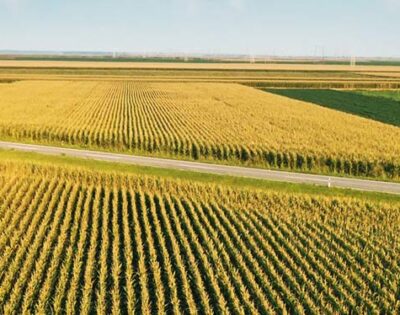The Circular Economy is a powerful tool to use our natural resources more efficiently to drive economic growth. It’s easy to understand if we look at it from the perspective of bio-based fuel-production facilities and their surrounding farms.
Gevo expects to use inedible field corn as feedstock to make bio-based renewable fuels and chemicals and there are numerous reasons why it works:
- There’s plenty of corn around. We look for facility sites situated amid thousands of acres of cornfields, such as many existing ethanol plants. That means reduced transportation cost (and emissions) to get the corn to the plant.
- Growing corn is a science, and, while the weather and other conditions affect yield, it produces a huge biomass growth over the course of the three- to four-month growing season, and a big part of that is carbon drawn from the atmosphere through photosynthesis.

- Once a plant is online, farmers will deliver their corn harvest, where it will be separated into its components, and the starch goes to the fermentation process to make biofuel, while the protein becomes animal feed.
- Strip-tilling means the farmers leave the roots of last year’s crop and plow a very narrow row between. As the root ball of each stalk decays in the ground, its carbon becomes part of the soil.
- High-protein animal feed helps livestock be healthier and also produce nutrient-rich manure that is then spread over the fields, preventing the farmer from needing to buy synthetic fertilizer and pay a crew to spread it.
Our Circular Economy
Reversing carbon emissions is a huge undertaking. But if we change the way we make fuel, using renewable methods and materials that can be recycled back into the world to be reused, it all starts to become a little easier.

